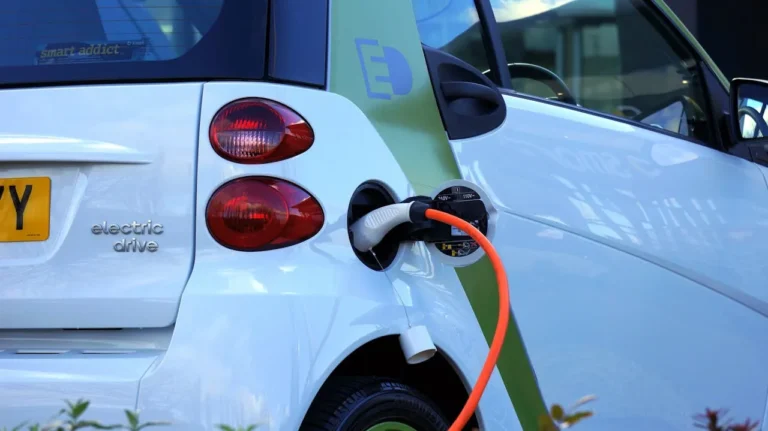
2026 Nissan LEAF: A Bold Evolution of the Iconic EV into a Sleek, Aerodynamic Crossover
Nissan has unveiled the all-new 2026 LEAF, a dramatic reinvention of its pioneering electric vehicle that helped shape the modern EV market. Now entering its third generation, the LEAF sheds its traditional hatchback form and emerges as a sleek, aerodynamic crossover SUV—marking the boldest transformation in the vehicle’s 16-year history.
From the refined bodywork and muscular stance to its advanced aerodynamics and immersive new interior, the 2026 LEAF embraces innovation at every angle while preserving the spirit of the original. With a drag coefficient of just 0.26—a remarkably low figure for a crossover—it blends style and efficiency like never before.
From Trailblazer to Trendsetter
The LEAF holds a special place in automotive history. When it launched in 2009, it became the world’s first mass-market all-electric vehicle, setting the stage for a new era of sustainable transportation. Since then, more than 500,000 units have been sold globally, establishing the LEAF as a true icon of the EV movement.
Giovanny Arroba, Vice President of Nissan Design Europe and lead on the 2026 LEAF project, describes the new model as a fusion of heritage and forward-thinking design.
“The design philosophy for the new LEAF is all about preserving a spirit of timeless Japanese futurism,” said Arroba. “We wanted to bring something impactful and striking to the table as we reimagine this icon for a new generation.”
A Confident Crossover Stance
The most significant visual departure from previous LEAF generations is its new crossover silhouette. Designers pushed the wheels outward toward the corners of the chassis, raised the overall stance, and shortened the front overhang. These changes give the 2026 LEAF a dynamic, agile posture that signals capability and sportiness.
Arroba emphasized that these proportions were deliberately chosen to signal a more assertive road presence: “It has a much more agile presence on the road. It feels planted, confident, and ready for whatever the journey brings.”
Sculpted for Aerodynamic Excellence
Nissan’s design team leveraged the inherent advantages of EV architecture to optimize the 2026 LEAF’s exterior. Unlike internal combustion vehicles that require a traditional grille, the LEAF’s smooth front fascia integrates more body-colored surfaces, creating a cleaner and more modern appearance.
LED headlamps are connected by a thin, continuous light bar across the front of the vehicle, enhancing its visual width. This design is echoed at the rear, where a high lip spoiler and vertical surfaces help guide airflow and reduce drag.
“The front end features a V-motion-inspired mask that integrates the lighting elements into one cohesive form,” Arroba explained. “You’ll see this rectangle motif again in the taillights, which feature a unique 3D, holographic design.”
This attention to visual detail is matched by an engineering focus on efficiency. Flush-fitting retractable door handles, hidden rear handles, and precision panel alignment all contribute to a seamless surface that slices through the air. The result: a crossover with aerodynamic performance comparable to some sedans.
“The silhouette is shaped by science,” Arroba said. “Aerodynamics aren’t just functional—they’re part of the design.”
Subtle Nods to Japanese Heritage
In crafting the new LEAF, Nissan designers incorporated a recurring design motif inspired by the brand’s Japanese roots. Throughout the vehicle, subtle patterns of two vertical bars alongside three horizontal bars appear—a visual nod to the numbers “ni” (two) and “san” (three), a playful reference to “Nissan.”
This motif is most prominently displayed in the taillights but can be found in smaller elements throughout the car, rewarding attentive drivers and passengers with hidden layers of design meaning.
“When you turn on the car, it comes to life in a digitalized, charming manner,” Arroba added. “It has personality—it welcomes you.”
A New Benchmark for Interior Experience
Inside, the 2026 LEAF breaks new ground with a cabin that prioritizes openness, user comfort, and emotional connection. Thanks to the EV platform’s flat floor architecture, the interior feels more expansive and flexible than ever before.
“We really wanted to show off the space this new platform provides,” said Arroba. “It allows for a more open layout, which we amplified with a panoramic dimming roof.”
This new roof—Nissan’s first dimming glass roof—can shift from transparent to opaque at the push of a button. The driver can control which parts of the roof are shaded, including the front, rear, or entire panel. When the sun shines through, it projects a shadow of the LEAF nameplate inside the cabin, adding a touch of visual storytelling.
Horizontal design lines stretch across the dashboard and door panels, enhancing the sense of width and calm. Materials have been upgraded throughout, with soft-touch surfaces replacing hard plastics in key areas. Even the darker trim materials feature a touch of metallic flake to catch and reflect light.
“Surfaces are alive,” Arroba said. “There’s vibrancy in the way the interior interacts with light. Even in subdued tones, there’s personality.”
Integrated Technology That Responds to Your Day
Nissan’s design team placed great emphasis on intuitive, user-friendly technology. Twin 14.3-inch screens anchor the dashboard, offering a seamless user interface with minimal visual clutter. The display graphics are adaptive, changing color and theme to reflect the time of day—providing a soft blue in the morning, transitioning through golden hues at sunset, and settling into cool tones at night.
“You step into the car and you feel the environment. It’s a subtle emotional connection that evolves as your day progresses,” said Arroba.
Despite the tech-forward execution, designers were careful not to overwhelm occupants with an overly digital feel. Physical controls remain where appropriate, and screens are framed to blend naturally into the dashboard rather than dominate it.
Honoring the Original, Embracing the Future
Though the 2026 LEAF bears little resemblance to its predecessor in form, it remains faithful to the mission that defined the original: making EVs accessible, appealing, and forward-looking. The redesign marks a clear shift toward the crossover space, which continues to dominate global vehicle demand. Yet at its core, the LEAF still represents Nissan’s ambition to lead the electrification movement.
“What makes LEAF special is its pioneering spirit,” Arroba said. “That lives on in this new design. We’re very proud of what we’ve created, and I can’t wait to see these on the road.”
As the automotive world races toward a fully electric future, Nissan has reaffirmed its position not just as a participant, but as a leader—with the all-new 2026 LEAF as its sleek, sophisticated, and aerodynamic statement of intent.







